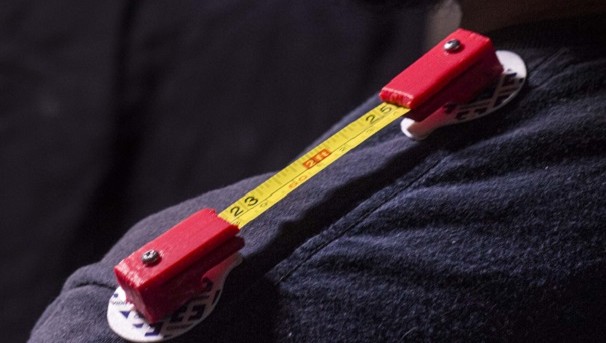This project is now in update mode. Check back regularly to see how things are progressing.
What we can do
From what we learned our device may fit very well with the current climate of the market. Therapists want their patients to get better as quickly as possible and cheaply. With insurance becoming more and more of a problem for patients, therapists want to maximize the patient's time in the clinic. If a device that can constantly remind their patient of their shoulder posture then the shoulder hiking habit can be broken quicker. From therapists opinions, that could be 2-3 weeks of saved time. This could greatly help patients with very limited insurance plans to recover properly or patients with limited time to commit for rehab. On the athletic trainers side, this could accelerate their regiment and get their patients to a far better state for their patients before the injury. Ultimately, this could take weight off the health care system and save both patients and the health care system money in the long run.
Currently we have 4 different clinics trying out our device. From the NSF program we have managed to recruit 6 more clinics that are curious on trying out this device.
What we learned from I-Corps Interviews
There is a possible need for the product during rehabilitation to break habits. The shoulder hiking up during exercises or day-to-day activities is a habit that therapist try to break by verbally telling them in the clinic and a conscious effort by the patient to be more aware of their body movements. This habit generally takes 4-6 weeks to break currently, but it varies person to person. Also, the habit may return after therapy is concluded.
Insurance plays a role in the recovery process for each patient. Some patients may receive 20 or so visits from their insurance plan, but for other patients it may be as low as 5 hard visits. This drastically changes the therapists exercise regiment to maximize recovery by laying more of the work at home for the patient. This does bring the problem that there is not enough structure for the patient to follow if this is the case. Number of visits can be extended but that may be 1-2 from the insurance company, if lucky.
An interesting discovery is that there are devices used to provide biofeedback to the patients on shoulder hiking. One interesting device is kinesio tape that is used to provide tactile feedback to the patient. This was brought up by a few therapists and from their opinion not seen to be useful but not discouraged on using it. Another device is an EKG muscle monitor which provides a sound when your muscle activates. This device is shown and taught in PT school but not used too often in clinic since it is an expensive device and stationary. A patient can buy one but it either costs too much or requires some know-how and time.
A military application was also discovered during the interviews. Biofeedback machines such as a muscle monitor is used for soldiers that are classified as "chest breathers". This is the act of breathing more from the chest than from the stomach area. "Chest breathers" tend to raise their shoulders up when they breath. This still needs more work to confirm as a possible application so further interviews will be needed.
Participated in the NSF Program
During the weeks of November 1 to November 17 we participated in NSF's I-Corps program. Here's a link to their website about their program. The program entailed us to talk to possible customers about their problems and see if our product fit without divulging any information about the product itself until the end of the interview.
It was a great 3 week program and we learned quite a bit about the market place for this product. We interviewed a total of 14 physical therapists, occupational therapists, and athletic trainers. We also got some leads on other professionals to interview such as orthopedic surgeons. There's still more work to be done on interviewing patients, insurance, and surgeons.
$25
Participant
Thank you for your contribution and for believing in simple solutions.
$50
Research Assitant
Thank you for your contribution and acknowledging the importance of correct posture.
$100
Project Lead
Your donation is generous and leads us to our goal. A prototype will be sent so you too can see the usefulness of our device.
$250
Mentor
Project Lead perks + for locals, a group lab tour with the other Mentors or at your own expense to visit Austin
$500
Co-PI
Mentor perks + a personal lab tour with up to 5 of your own guests
$1,000
PI
Co-PI perks + a customized shoulder assessment with motion capture technology
$2,000
Angel Investor
PI perks + a complete gait assessment with motion capture technology






